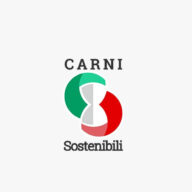
Italian meat is increasingly lean
It is estimated that in the US alone the total amount of fat in products derived from cattle has decreased by 44% since 1970. Even in Italy the meat has noticeably “lost weight” and is increasingly lean. If you compare the data of food composition tables (INRAN – National Research Institute for Food and Nutrition) for 1996 and 2005, you find that the fat in beef tenderloin went from 5% to 2.2% (-56%), those of sirloin from 5.2% to 2.9% (-44%). A reduction which affected all cuts of beef, but also pork and cured meats.
The new nutritional values of Italian cured meats emerged from the analyses carried out by INRAN and ASSICA (Experimental Station for the Food Preserve Industry) in 2011, and confirmed that meats are even more nutritious than ever before and have a better nutritional profile, because of less fat, with less cholesterol, salt and preservatives and larger amounts of proteins, vitamins, minerals and essential fatty acids.
Pork since the 80s has reduced the content of fat by about 30%, also in order to meet consumer preferences. The loin is the leanest part of both beef and pig, while the chest is typically the leanest part of poultry meat. The skin is the main source of fat in poultry meat. The fat content in major retail cuts of poultry varies from 1 to 17%, and the cuts containing the skin have the highest values.
In particular, the energy value of poultry meat varies between chicken breast and chicken thighs with skin: the presence of skin (due to its fat content) increases the caloric value by about 25-30%. Fats, residing mainly in the skin, can then be easily removed. The lipid content of chicken and turkey is about 1% in the leaner cuts, such as chicken and turkey breast, and about 17% in chicken wings cooked with the skin. However, compared to other types of meat, poultry seems to be relatively low in fat.
The Sustainable Meat Project






